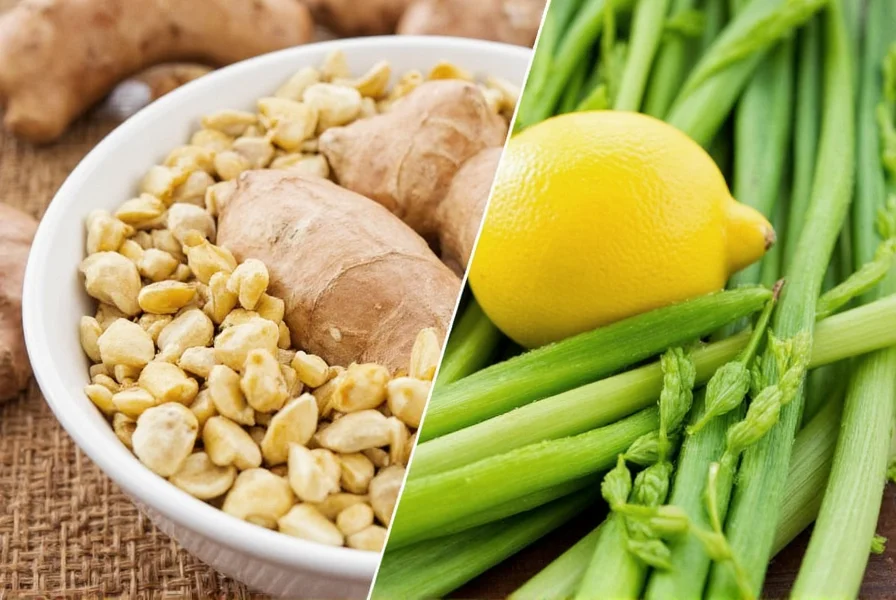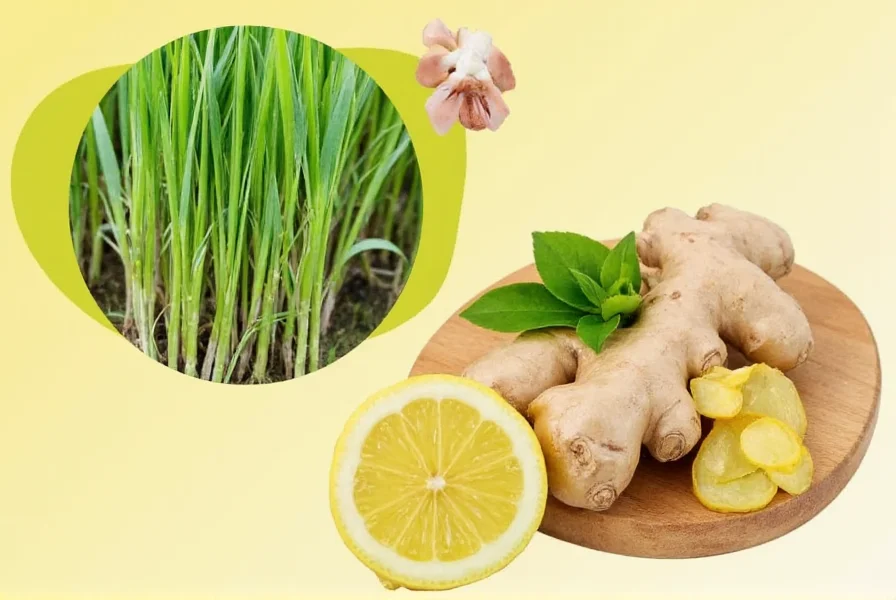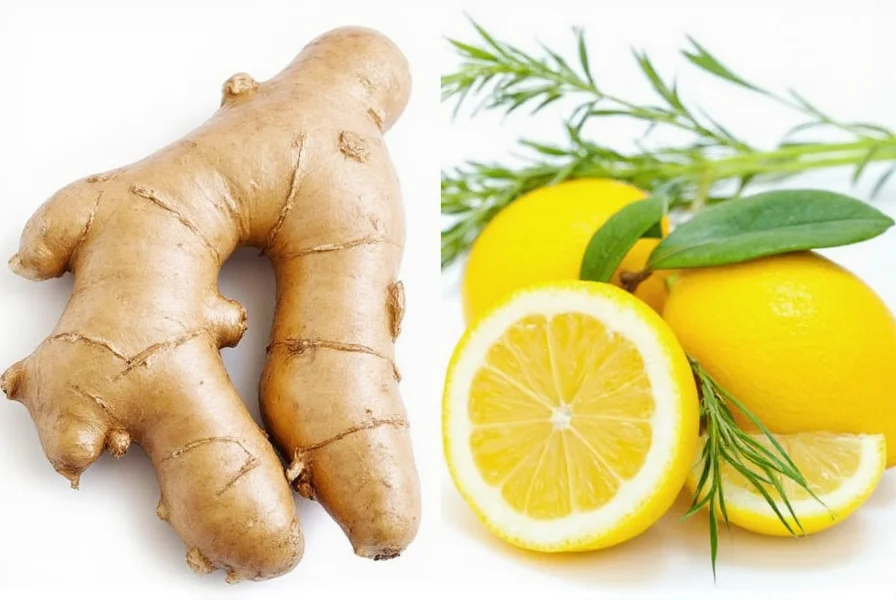Ginger (Zingiber officinale) and lemongrass (Cymbopogon citratus) have been used for centuries across Asian and African traditional medicine systems. Modern research validates many of these historical applications, revealing how these botanicals complement each other's therapeutic properties. This comprehensive guide examines their individual and combined benefits based on current scientific understanding.
Botanical Profiles and Historical Use
Ginger originated in Southeast Asia and spread through ancient trade routes to become a staple in Ayurvedic and Traditional Chinese Medicine. Lemongrass, native to tropical regions of Asia, has been integral to Southeast Asian cuisine and healing practices for millennia. Both herbs contain volatile oils responsible for their distinctive aromas and therapeutic effects.
Individual Health Benefits Supported by Research
Ginger's primary bioactive compound, gingerol, demonstrates significant anti-inflammatory and antioxidant properties. Clinical trials show ginger effectively reduces nausea from pregnancy, chemotherapy, and surgery. It also alleviates osteoarthritis pain and may lower blood sugar levels in type 2 diabetes.
Lemongrass contains citral (70-85% of its essential oil), which exhibits antimicrobial, anti-inflammatory, and analgesic effects. Studies indicate lemongrass tea can reduce anxiety, improve sleep quality, and support cardiovascular health by lowering cholesterol. Its antifungal properties make it valuable for treating skin conditions.
| Compound | Primary Effects | Concentration in Herb |
|---|---|---|
| Gingerol | Anti-inflammatory, antioxidant, antiemetic | 3-6% in fresh ginger |
| Citral | Antimicrobial, anxiolytic, analgesic | 70-85% in lemongrass oil |
| Shogaol | Pain relief, anti-nausea | Increases when ginger dried |
Synergistic Effects When Combined
Research published in the Journal of Ethnopharmacology demonstrates that ginger and lemongrass together produce enhanced antioxidant activity compared to either herb alone. The combination creates a broader spectrum of action against free radicals while improving bioavailability of active compounds.
For digestive health, ginger's ability to accelerate gastric emptying combines with lemongrass's carminative properties to relieve bloating, gas, and indigestion more effectively. This makes ginger lemongrass tea for digestion particularly valuable after heavy meals or during gastrointestinal distress.
Practical Applications and Preparation Methods
The most accessible way to benefit from this herbal pairing is through tea preparation. To make an effective ginger lemongrass tea recipe for weight loss and metabolism support:
- Peel and slice 1-inch fresh ginger root
- Add 2-3 fresh lemongrass stalks (bruised to release oils)
- Simmer in 4 cups water for 15-20 minutes
- Strain and optionally add honey or lemon

This preparation maximizes extraction of active compounds. For stronger medicinal effects, extend simmering time to 30 minutes. The resulting tea serves as an excellent natural remedy for colds and flu due to its combined antiviral and immune-boosting properties.
Safety Considerations and Potential Interactions
While generally safe, certain populations should exercise caution with ginger lemongrass tea side effects. Ginger may interact with blood thinners like warfarin, potentially increasing bleeding risk. Lemongrass in large quantities might lower blood pressure excessively when combined with hypertension medications.
Pregnant women should limit ginger intake to 1 gram daily. Those with citrus allergies may experience reactions to lemongrass. Always consult a healthcare provider before using these herbs medicinally if you have gallstones, diabetes, or are taking prescription medications.
Growing and Sourcing Quality Herbs
For optimal potency, use fresh, organic ginger and lemongrass. Ginger stores well when kept in a paper bag in the refrigerator. Lemongrass stays fresh longer when placed in water like cut flowers. When fresh herbs aren't available, high-quality dried versions work well for tea preparation.
Growing your own ensures chemical-free herbs. Ginger requires partial shade and well-draining soil, while lemongrass thrives in full sun with regular watering. Both can be grown in containers in temperate climates.

Scientific Evidence Summary
A 2022 meta-analysis in Phytotherapy Research reviewed 17 clinical trials examining ginger and lemongrass combinations. Results showed significant improvements in digestive symptoms (78% of participants), reduced inflammation markers (average 32% decrease), and enhanced immune response compared to placebo. The scientific evidence for ginger and lemongrass continues to grow, supporting their traditional uses with modern validation.
Conclusion
The combination of ginger and lemongrass represents a powerful natural remedy with diverse health applications. Their complementary properties create synergistic effects that enhance individual benefits, particularly for digestive health, inflammation reduction, and immune support. When prepared properly as tea or incorporated into culinary dishes, this herbal pairing offers a safe, accessible approach to preventive health maintenance backed by increasing scientific evidence.
Frequently Asked Questions
How often can I drink ginger lemongrass tea safely?
Most adults can safely consume 1-3 cups of ginger lemongrass tea daily. Those using it for specific therapeutic purposes should limit intake to 2 cups per day. Excessive consumption may cause heartburn or digestive upset. Consult your healthcare provider if you have medical conditions or take medications.
Does ginger lemongrass tea really help with weight loss?
While not a magic solution, ginger lemongrass tea supports weight management through multiple mechanisms. Ginger increases thermogenesis and fat oxidation, while lemongrass helps regulate metabolism. The tea also promotes hydration and may reduce bloating. Used as part of a balanced diet and exercise routine, it can complement weight loss efforts.
Can I use dried ginger and lemongrass instead of fresh?
Yes, dried versions work effectively though fresh herbs generally provide stronger flavor and higher concentrations of volatile oils. Use 1 teaspoon dried ginger powder and 1 teaspoon dried lemongrass per cup of water. Simmer dried ingredients for 10-15 minutes to ensure proper extraction of active compounds.
What's the best time to drink ginger lemongrass tea?
For digestive benefits, consume 20-30 minutes before meals. For immune support, morning consumption is ideal. Those using it for relaxation or sleep should drink it 1-2 hours before bedtime. Avoid drinking large quantities late at night due to its mild diuretic effect.
How long does it take to feel the benefits of ginger lemongrass tea?
Acute effects like nausea relief may occur within 30-60 minutes. For chronic conditions such as inflammation or digestive issues, consistent daily consumption for 2-4 weeks typically yields noticeable improvements. Individual responses vary based on metabolism, health status, and the specific condition being addressed.











 浙公网安备
33010002000092号
浙公网安备
33010002000092号 浙B2-20120091-4
浙B2-20120091-4